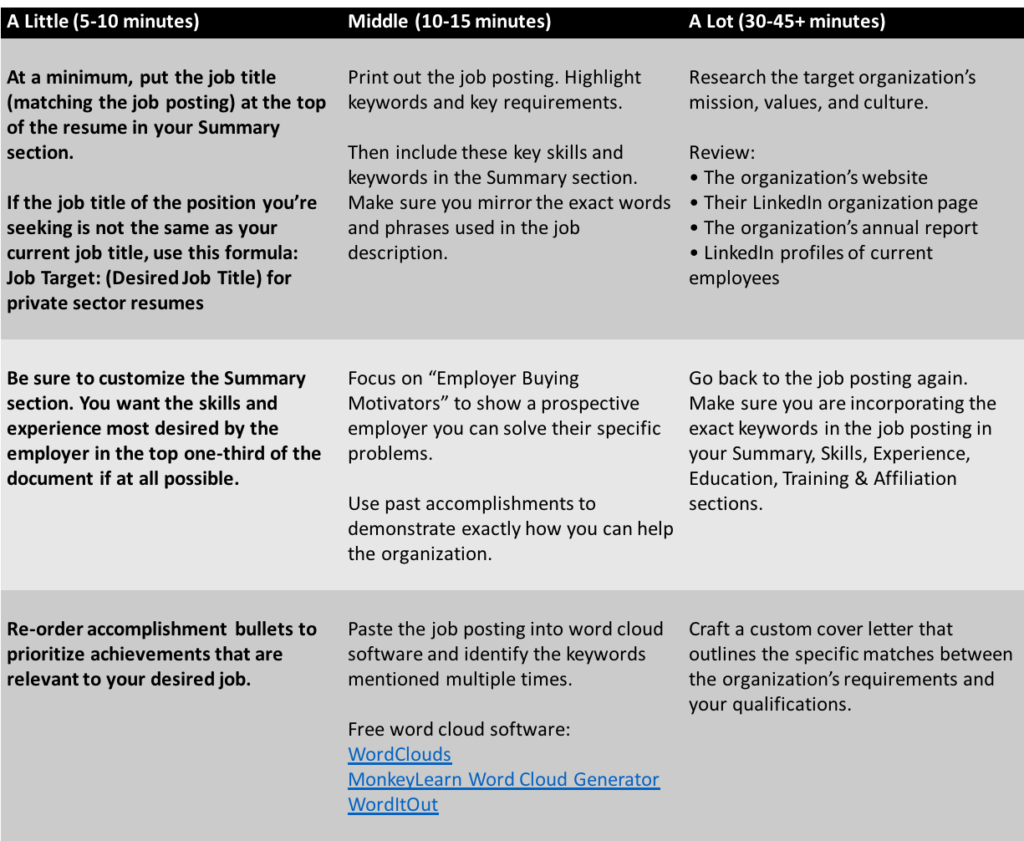Deciding to change careers is a big decision. It doesn’t just happen; it takes work and focus in 4 areas: Future Orientation, Research, Mindset, and Putting Yourself Out There. Whether you are focused on a federal or private sector career change, here are some specific actions to take to help you make that change you’ve been dreaming about.
Future Orientation
- Start thinking about the future by examining the past. Reflect on your career journey to date — how you got to where you are today. How did you choose your current career?
- Spend 15 minutes brainstorming what you want your ideal next job to be like in your new career fields.
- Take a career assessment test (skills test) to identify opportunities for a future career. Free assessments include the O*Net Interest Profiler (https://www.mynextmove.org/explore/ip) or the CareerOneStop Skills Matcher (https://www.careeronestop.org/toolkit/Skills/skills-matcher.aspx).
- Make a list of what you like — and don’t like — about your current job. What do you want to be different in your next career?
- Take a sheet of paper. On one half, write a list of the skills you already possess. On the other half, make a list of the skills required in your new industry.
Research
- Conduct an inventory. What skills, education, and experience do you have to offer (not just from your current job, but also consider volunteer work, hobbies, previous roles, etc.)?
- Explore your transferable skills and experience using a tool like the CareerOneStop mySkills myFuture tool: https://www.myskillsmyfuture.org.
- Spend 15 minutes researching a target profession. Use an online tool like the CareerOneStop Occupation Profile: https://www.careeronestop.org/Toolkit/Careers/Occupations/occupation-profile.aspx
- Make a list of 10 job titles you’d consider in a career change.
- Make a list of 10 target employers you’d be interested in working for in your next career.
- Spend 15 minutes researching the salary and benefit averages for your desired career.
- Write down the names of 10 people who might be helpful in making your career change.
Mindset
- Take out a piece of paper (or open a document on your computer) and spend 5-10 minutes answering these questions: Why do you want to make a change? What do you want to be different in your next career?
- Write out a statement — a mission statement — that you can use to guide your career change. It should outline what you want your career to look like and how you will achieve your goal.
Putting Yourself Out There
- Register for a class, training, or degree that will move you towards your next career.
- Make an appointment with a career counselor to provide an objective point of view on your career change planning.
- Set up an informational interview. Arrange a meeting/call to talk to someone who does the job you want to do.
- Ask one of your contacts if you can “shadow” them at their job to see what a “day in the life” is like in that career.
- Re-target your resume to highlight your transferable skills, training and education, and experience towards your new career target.
None (or even all) of the above ideas will guarantee you a successful career change but they will help you get on the road to success!

